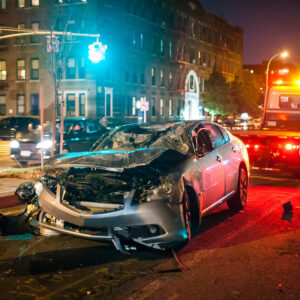 After a car accident in Texas, law enforcement, insurance companies, and legal teams will work to investigate who should be held liable. Liability, however, is not always clear-cut, and sometimes multiple parties to the accident will share liability. In this post, we’ll discuss the laws and practices used in Texas to measure shared fault after a car accident.
After a car accident in Texas, law enforcement, insurance companies, and legal teams will work to investigate who should be held liable. Liability, however, is not always clear-cut, and sometimes multiple parties to the accident will share liability. In this post, we’ll discuss the laws and practices used in Texas to measure shared fault after a car accident.
The state’s negligence laws can be complex, and it’s best to seek the advice of an experienced car accident lawyer if you’re curious about the shared fault in your circumstances. The Dallas car accident attorneys of Benton Accident & Injury Lawyers offer free consultations to answer your questions. If you sustained injuries and losses after a negligent driver hit you, let us fight for the compensation you deserve. Contact our firm today at (214) 777-7777.
The Proportionate Responsibility Law in Texas
Chapter 33 of Texas’s Civil Practice and Remedies Code includes the state laws relevant to shared fault for car accidents. The general proportionate responsibility law, TX CPRC 33.001, reads: “In an action to which this chapter applies [including personal injury cases], a claimant may not recover damages if his percentage of responsibility is greater than 50 percent.”
In other words, you can’t obtain compensation from your personal injury lawsuit if the court finds you were more than 50 percent at fault for the car accident.
For example, suppose Alpha and Bravo are driving in the right and left lanes (respectively) of the George Bush Turnpike. On an eastward curve, Alpha veers out of his lane into the passenger side of Bravo’s car, sideswiping him. Alpha sustained injuries to his neck in the accident, while Bravo was not injured.
An investigation determines that there was a shared fault. Alpha was using his cell phone and did not check his blind spot, making him two-thirds at fault. Bravo ignored a “Left Lane for Passing Only” sign and camped in the left lane without intending to overtake Alpha, making him one-third at fault.
Because Alpha was 66 percent at fault, he cannot sue for damages according to the Texas proportionate responsibility law because he is over the 50 percent shared fault ceiling for personal injury claims.
How Is Shared Fault Measured?
 Texas law requires “the trier of fact” to determine shared responsibility as a percentage. The law applies to judges and juries in a court setting. However, in personal injury cases, each side’s insurer and legal team will make their own assessments and argue what share of the fault goes to each party involved in the accident. If the case goes to court, a judge or jury ultimately has the final say on shared fault proportions.
Texas law requires “the trier of fact” to determine shared responsibility as a percentage. The law applies to judges and juries in a court setting. However, in personal injury cases, each side’s insurer and legal team will make their own assessments and argue what share of the fault goes to each party involved in the accident. If the case goes to court, a judge or jury ultimately has the final say on shared fault proportions.
To assess shared fault, insurers, and lawyers will synthesize multiple sources of information. These may include, but are not limited to:
- The police accident report – Accident reports are objective documents and contain statements from all parties involved in the accident. The reporting officer will record and draw what they see at the accident scene, and they may offer their opinion about who is at fault.
- Witness statements – The more witnesses that saw the accident, the more solid a prediction of fault may be. Adjusters and attorneys will search for corroborating statements and footage.
- Issued citations – If a party to the accident violated traffic laws, investigators might consider the citations a responding officer issued when determining fault.
The final percentages of shared fault are subject to change as the case progresses. During negotiations between each party’s insurance companies and lawyers, each side will seek to minimize their proportion of the shared fault. As they share evidence, the balance of fault may change, ultimately affecting the settlement’s size.
What Consequences Can I Face If I Am Partially at Fault?
If it is determined you were partially at fault for an accident, you may still be able to seek compensation for your injuries and losses. However, even if you were 50 percent or less at fault, proportionate responsibility laws allow courts to consider shared fault when awarding damages, and insurers can reduce the size of a settlement based on the percentage of fault ascribed to you.
Consult a Dallas Car Accident Attorney
Even in matters of shared fault, the Dallas car accident attorneys of Benton Accident & Injury Lawyers could help you fight for the compensation you deserve after a car crash. Our attorneys know how to measure shared fault. We work with subject matter experts and investigators to gather the evidence necessary to determine who is liable for the accident. Call us at (214) 777-7777 for a free, no-obligation case review.

